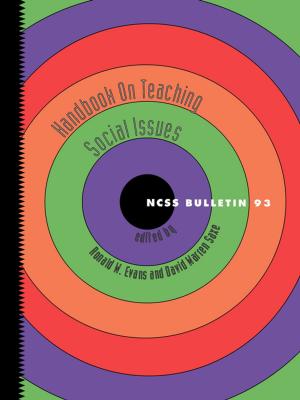Innovative Approaches to Reducing Global Poverty
Business & Finance, Management & Leadership, Management, Nonfiction, Social & Cultural Studies, Social Science, Sociology, Human Resources & Personnel Management| Author: | ISBN: | 9781607526087 | |
| Publisher: | Information Age Publishing | Publication: | September 1, 2007 |
| Imprint: | Information Age Publishing | Language: | English |
| Author: | |
| ISBN: | 9781607526087 |
| Publisher: | Information Age Publishing |
| Publication: | September 1, 2007 |
| Imprint: | Information Age Publishing |
| Language: | English |
This book presents innovative approaches to reducing poverty through the commitment, involvement, and leadership of individuals, forprofit businesses, and notforprofit organizations. Many of these approaches are making significant contributions to reducing poverty right now. Some of these approaches may look promising now at their current level of success but will turn out to be limited in their scalability or in their ability to sustain themselves and endure over time. Others may some day be looked back upon as having laid the ground work for major contributions to reducing global poverty. However, all of them offer fruitful grounds for inquiry and learning. It is our intention that sharing the learning from these projects and initiatives from around the world will be useful to others committed to assisting the poor in escaping from poverty — especially by bringing the poor into productive business activities. It is also our intention that these experiences stimulate ideas for new directions that build upon and go beyond the rich variety of projects and successes described by the authors in this book. The innovative programs and projects described in these chapters are reducing poverty not just in Bangladesh, India, and Kenya, but also in the UK and the USA. They remind us that poverty is everywhere in developed and underdeveloped countries. They remind us that just as poverty is in some sense almost everywhere, the opportunities to reduce poverty are also almost endless. They remind us how important a few committed individuals can be in pioneering new ways of reducing poverty and enhancing social justice. They point to the need for contributions by forprofit companies and notforprofit social enterprises. They support and remind us of Peter Drucker’s framing of the poverty issue in terms not of seeking to make the poor wealthy, but instead in helping the poor find work that is productive and sustainable. And they remind us that reducing poverty, whether on a large scale or on a small scale, requires commitment, energy, and persistence, and a profound caring for others. The book also supports C K. Prahalad’s work made available in a number of his writings, including his very influential book The Fortune at the Bottom of the Pyramid: Eradicating Poverty through Profits (Wharton, 2004). Prahalad’s work has called attention to creative ways to think about the question of poverty and how it might be reduced and eventually eliminated. He suggests ways of thinking and acting that break many of the traditional rigidities that occur in how we think about markets and business practices. Although one theme of Prahalad’s work relates to the benefits of marketing to the poor by supplying products better fitting the needs of low income individuals and groups, his work also emphasizes ways in which the poor can produce innovatively conceived and designed products for themselves and for others. This emphasis on enabling the poor to become productive is also presented forcefully in many of the chapters of this book, just as it is in Craig and Peter Wilson’s, Make Poverty Business: Increase Profits and Reduce Risks by Engaging with the Poor Greenleaf 2O06).
This book presents innovative approaches to reducing poverty through the commitment, involvement, and leadership of individuals, forprofit businesses, and notforprofit organizations. Many of these approaches are making significant contributions to reducing poverty right now. Some of these approaches may look promising now at their current level of success but will turn out to be limited in their scalability or in their ability to sustain themselves and endure over time. Others may some day be looked back upon as having laid the ground work for major contributions to reducing global poverty. However, all of them offer fruitful grounds for inquiry and learning. It is our intention that sharing the learning from these projects and initiatives from around the world will be useful to others committed to assisting the poor in escaping from poverty — especially by bringing the poor into productive business activities. It is also our intention that these experiences stimulate ideas for new directions that build upon and go beyond the rich variety of projects and successes described by the authors in this book. The innovative programs and projects described in these chapters are reducing poverty not just in Bangladesh, India, and Kenya, but also in the UK and the USA. They remind us that poverty is everywhere in developed and underdeveloped countries. They remind us that just as poverty is in some sense almost everywhere, the opportunities to reduce poverty are also almost endless. They remind us how important a few committed individuals can be in pioneering new ways of reducing poverty and enhancing social justice. They point to the need for contributions by forprofit companies and notforprofit social enterprises. They support and remind us of Peter Drucker’s framing of the poverty issue in terms not of seeking to make the poor wealthy, but instead in helping the poor find work that is productive and sustainable. And they remind us that reducing poverty, whether on a large scale or on a small scale, requires commitment, energy, and persistence, and a profound caring for others. The book also supports C K. Prahalad’s work made available in a number of his writings, including his very influential book The Fortune at the Bottom of the Pyramid: Eradicating Poverty through Profits (Wharton, 2004). Prahalad’s work has called attention to creative ways to think about the question of poverty and how it might be reduced and eventually eliminated. He suggests ways of thinking and acting that break many of the traditional rigidities that occur in how we think about markets and business practices. Although one theme of Prahalad’s work relates to the benefits of marketing to the poor by supplying products better fitting the needs of low income individuals and groups, his work also emphasizes ways in which the poor can produce innovatively conceived and designed products for themselves and for others. This emphasis on enabling the poor to become productive is also presented forcefully in many of the chapters of this book, just as it is in Craig and Peter Wilson’s, Make Poverty Business: Increase Profits and Reduce Risks by Engaging with the Poor Greenleaf 2O06).















